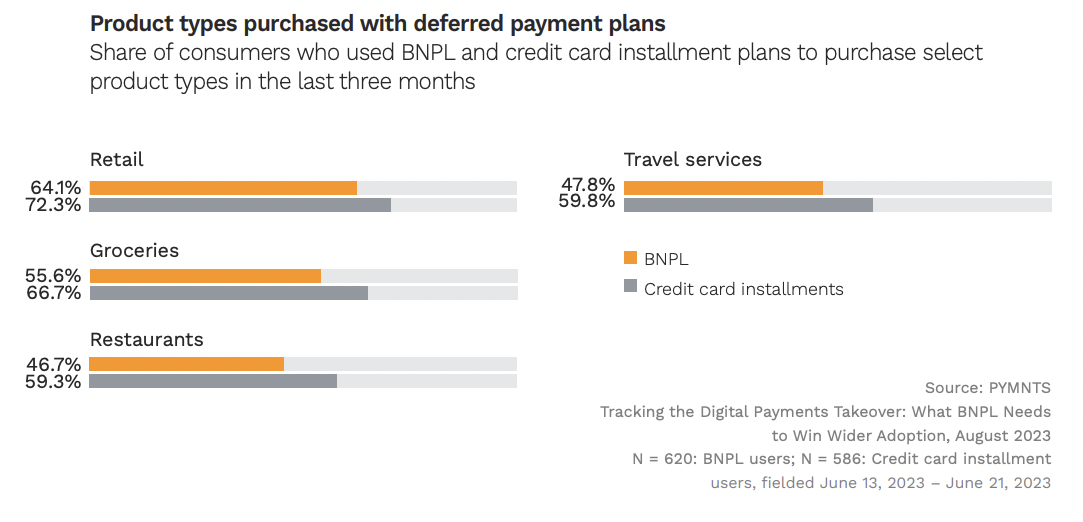
As macroeconomic challenges continue to rack budget-strapped consumers, a small but meaningful share of grocery shoppers is using buy now, pay later (BNPL) to buy the food they need.
For PYMNTS’ new study “Tracking the Digital Payments Takeover: What BNPL Needs to Win Wider Adoption,” created in collaboration with Amazon Web Services, we surveyed more than 3,100 consumers in June about the features they expect from deferred payment plans.
The results revealed that, of the 20% who used BNPL, 56% leveraged the payment method to buy groceries.
The emergence of BNPL in grocery comes as consumers increasingly struggle to get by financially. Intelligence from the latest edition of PYMNTS’ “New Reality Check: The Paycheck-to-Paycheck Report,” created in collaboration with LendingClub, “The Nonessential Spending Deep Dive Edition,” revealed that, in July, 21% of consumers were living paycheck to paycheck with issues paying bills, up from 19% a year earlier.

Grocers are seeing this segment of consumers making difficult tradeoffs and buying fewer items overall.
Rodney McMullen, CEO of Kroger, the nation’s leading pure-play grocer, noted this trend on the company’s most recent earnings call in June.
“Our budget-conscious households are buying fewer items, particularly as [Supplemental Nutrition Assistance Program (SNAP)] benefits declined during the quarter,” he said at the time. “In some cases, we see these households switching to lower-priced products and smaller pack sizes. … While no one can predict the macroeconomic outlook with certainty, we expect customers, particularly those on tighter budgets, will continue to feel the effects of inflation and higher interest rates.”
Similarly, Walmart, the world’s largest grocery retailer, has also been seeing consumers struggle to make ends meet.
“Jobs, wages and pockets of disinflation are helping our customers, but rising energy prices, resuming student loan payments, higher borrowing costs, and tightening lending standards, and a drawdown in excess savings mean that household budgets are still under pressure,” CEO Doug McMillon said on the company’s last earnings call in August.